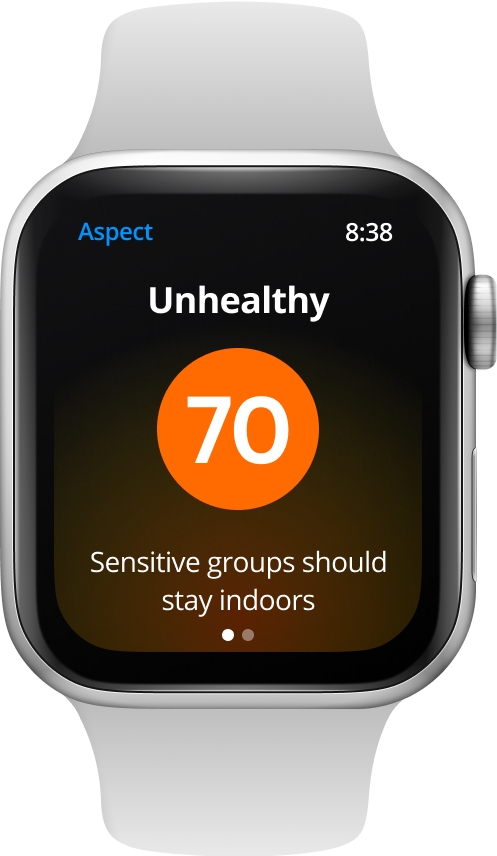Air Quality WatchOS Tracker
Tracking local air quality quickly from your watch
Introduction
According to Pew Research, approximately 21% of Americans use smartwatches, which amounts to nearly 68.8 million people (Vogels, pewresearch.org). Furthermore, the National Institute of Environmental Health Sciences, air pollution affects 9 out 10 humans who live in urban settings. As such, I designed this WatchOS application as a tool to inform people of their current exposure to air pollution, and for ways to alert them and nudge them toward action.
Context and Problem Statement
Background
Air Quality pollution data is more abundant then ever. Companies such as PurpleAir and AirNow have created sensor devices and models to track real-time air pollution at a moments notice. Since 9 out 10 people in urban settings, I set out to create a minimal WatchOS application to notify users in real-time their exposure to air pollution.
Problem Statement
Most applications, including Apple’s weather application, lack providing continuous awareness of local air quality. This application proposes real-time notifications of a user’s exposure to harmful pollutants, with a minimal design experience and series of notifications.
Seamless Integration
When are people most interested in their local air quality? They may be interested first thing in the morning when the wake up. People may check or need to be notified when it is wildfire season and they live near sensitive areas. Potentially, there may be a chemical disaster nearby that requires all citizens within a certain radius be notified. When checking real time air quality, a simple introduction may be the best approach. It doesn’t distract from the simplicity of the watch itself, and a friendly message depending on the time may ease some tension. In events where spikes in unhealthy air quality are detected, a notification is also necessary.
Intro Message
Checking AQI
Notification
Future Iterations and Research Questions
There are many ways to improve this concept. A WatchOS app is a frequent companion to an iOS App. On iOS, a map of an area could be displayed showing which areas in a locality to avoid. There could also be routes to show people where they should go to get access to the most green space. Furthermore, there are some outstanding questions that may help understand society’s relationship with air quality, such as:
Where do populations of smart watch users live and what are the air quality trends?
In what ways are people positively or negatively affected by air quality?
What information can wearables provide that improve people’s daily habits?








